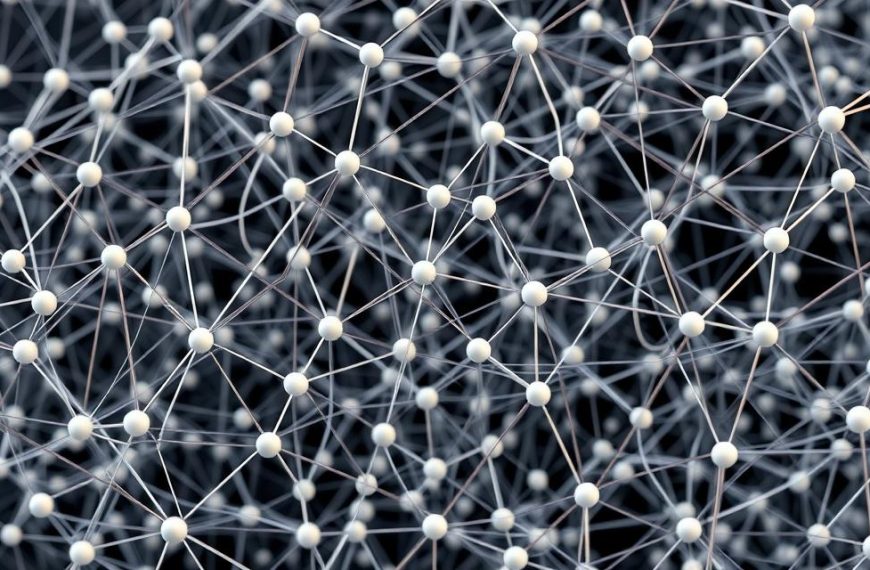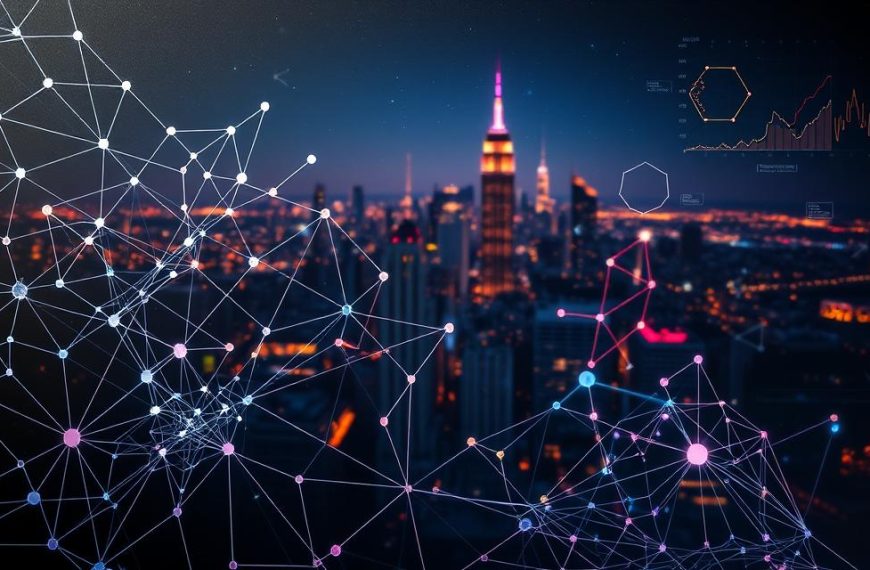Many people confuse neural networks with deep learning, assuming they refer to identical concepts. While related, these terms describe distinct layers of artificial intelligence systems.
IBM explains AI as a hierarchy: machine learning sits under AI, while deep learning is a subset of ML. Neural networks form the foundation for deep learning models.
Voice assistants like Alexa and Google Search rely on both technologies. However, key differences exist in architecture complexity, training data needs, and decision-making autonomy.
This article clarifies their relationship while highlighting practical applications. We’ll examine how layer depth, data requirements, and automation levels create meaningful distinctions between these powerful tools.
Understanding Neural Networks and Deep Learning
Biological brain inspiration drives the design of computational models in AI. These systems process information through interconnected nodes, mimicking human cognition. Below, we dissect their core components.
What Are Neural Networks?
Neural networks replicate biological neurons using layers of nodes. Input layers receive data, hidden layers analyze patterns, and output layers deliver results. IBM notes this structure enables tasks like speech recognition.
“Neural networks form the backbone of modern AI, transforming raw data into actionable insights.”
What Is Deep Learning?
As a subset machine learning method, deep learning employs deep neural networks with three or more layers. Unlike traditional machine learning, it processes unstructured data like images without manual feature extraction.
| Feature | Neural Networks | Deep Learning |
|---|---|---|
| Layers | 1-3 | 3+ |
| Data Type | Structured | Unstructured |
| Human Intervention | High | Low |
For example, deep learning automates facial recognition by analyzing pixel patterns directly. This reduces reliance on pre-labeled datasets.
Are Neural Networks and Deep Learning the Same?
The relationship between these technologies resembles Russian nesting dolls—each layer reveals deeper complexity. InvGate’s hierarchy illustrates this: AI encompasses machine learning, which houses neural networks, and deep learning sits as a specialized subset.
The Russian Doll Analogy: How They Relate
All deep learning systems use neural networks, but traditional models lack the depth to qualify. Think of it like squares and rectangles—every DL model is a NN, but not all NNs are DL.
Layer count defines the divide. Basic structures have 2–3 hidden layers, while learning vs. neural advancements demand 3+ (IBM cites models with 150+). This depth enables automatic feature extraction, reducing manual tuning.
“Deep learning represents neural networks on steroids—scaled in layers, autonomy, and capability.”
Practical implications? Voice assistants use shallow networks for simple commands but deploy deep learning for nuanced tasks like accent interpretation. The vs. neural networks debate hinges on this scalability.
Key Differences Between Neural Networks and Deep Learning
Computational power separates these AI technologies more than definitions suggest. While both process data through interconnected nodes, their scale and autonomy diverge sharply. IBM reports 35% of businesses now deploy AI, with generative models accelerating adoption by 70%.
Architecture Complexity
Basic models use simple perceptrons in the input layer for structured data. In contrast, learning algorithms for deep systems rely on convolutional or recurrent structures. These handle unstructured inputs like images or speech.
Hardware needs differ drastically. Traditional setups run on CPUs, while advanced models demand GPU clusters. AI Foundry notes this impacts costs and deployment speed.
Data Requirements and Human Intervention
Shallow networks need thousands of labeled samples. Machine learning algorithms here require manual feature extraction. Deep alternatives process millions of raw data points autonomously.
“Generative AI slashes implementation time by automating pattern recognition—a game-changer for industries.”
| Factor | Neural Networks | Deep Learning |
|---|---|---|
| Hardware | CPU | GPU/TPU |
| Data Volume | Thousands | Millions |
| Automation Level | Low | High |
How Neural Networks Work
Interconnected layers transform raw data into meaningful insights. These systems rely on weighted connections to mimic human decision-making. Below, we break down their core mechanics.
Basic Structure: Input, Hidden, and Output Layers
Every neural network processes data through three key layers:
- Input: Receives raw data (e.g., pixels or text).
- Hidden: Analyzes patterns using activation thresholds.
- Output: Delivers final predictions or classifications.
IBM notes feedforward training adjusts weights to minimize errors. This backward correction is called backpropagation.
Types of Neural Networks
Different architectures solve unique problems:
- Feedforward: Data flows one way (e.g., spam filters).
- Recurrent (RNN): Handles time-series data like speech.
- Convolutional (CNN): Uses filters for image recognition.
Google Search employs learning neural networks to rank pages. CNNs power facial recognition by scanning pixel hierarchies.
“Convolutional layers automate feature detection, eliminating manual image tagging.”
Autoencoders showcase network deep learning potential. They compress data unsupervised, useful for fraud detection.
How Deep Learning Builds on Neural Networks
Modern AI systems evolve through layered complexity, with each level enhancing predictive accuracy. While traditional models rely on shallow architectures, deep neural frameworks stack hidden layers to mimic human cognition. This depth enables nuanced tasks like medical diagnosis or language translation.
The Role of Multiple Hidden Layers
IBM’s diabetic retinopathy detector showcases hierarchical learning. Initial layers identify edges in retinal scans, mid-layers recognize shapes like blood vessels, and final layers classify disease severity. This neural network deep approach automates what once required manual analysis.
Transformers in natural language processing follow a similar pattern. They process words through attention mechanisms, weighing context across dozens of layers. The result? More accurate translations and chatbots.
Automatic Feature Extraction
Traditional models demand handcrafted rules for feature extraction. Deep alternatives learn directly from raw data. For example, AI Foundry’s retinal scan system analyzes 1M+ unlabeled images, detecting patterns invisible to humans.
“Layer depth transforms AI from a tool into a collaborator—capable of discovering insights beyond human perception.”
This autonomy reduces development time and scales across industries. From voice assistants to self-driving cars, layered architectures drive innovation.
Real-World Applications
From virtual assistants to medical breakthroughs, AI technologies shape modern life in surprising ways. While both neural networks and deep learning drive innovation, their applications reveal distinct strengths.
Neural Networks in Everyday Tech
Basic models power tools we use daily. Email spam filters analyze keywords, while credit scoring systems predict loan risks. Voice assistants like Siri rely on shallow networks for command recognition—processing pre-defined phrases efficiently.
IBM’s Watsonx.ai integrates these models for enterprise tasks. Fraud detection systems flag anomalies in transaction patterns, reducing manual review time by 40%.
Deep Learning Breakthroughs
Advanced systems tackle unstructured data. GPT-4 excels in natural language processing, generating human-like text. Midjourney creates art from text prompts, and Tesla Autopilot navigates roads using real-time deep neural networks.
“AlphaFold solved protein-folding puzzles in hours—a task that took scientists decades.”
| Application | Neural Networks | Deep Learning |
|---|---|---|
| Speech Processing | Fixed commands (Siri) | Contextual chats (ChatGPT) |
| Image Analysis | Basic object detection | Art generation (Midjourney) |
| Data Volume | Thousands of samples | Millions of unlabeled files |
IBM reports 80% of enterprise data is unstructured—fueling DL adoption. From diagnosing diseases to drafting legal documents, layered architectures push boundaries.
Neural Networks vs. Machine Learning
Food classification highlights fundamental gaps in conventional algorithms. IBM’s pizza/burger/taco experiment shows machine learning struggles with unstructured images without manual labeling. This vs. machine learning comparison reveals why newer approaches gain traction.
Data Processing Divergence
Traditional systems require structured inputs like spreadsheets. Decision trees analyze preset features, while neural networks detect patterns autonomously. Retailers use this difference—ML predicts sales, but visual search needs perceptual layers.
“Supervised learning demands thousands of labeled examples, creating bottlenecks in real-world deployment.”
Scalability Showdown
Basic models plateau with increasing data. Machine learning vs. advanced architectures shows perceptrons improve accuracy with more samples. Voice recognition systems demonstrate this—shallow networks fail with accents, while deep ones adapt.
- Decision trees: Prone to overfitting noisy data
- Perceptrons: Refine weights through backpropagation
- Learning curves: NNs scale linearly, ML hits ceilings
Autonomous feature extraction gives neural frameworks an edge. From medical imaging to fraud detection, reduced human intervention drives adoption.
Deep Learning vs. Machine Learning
Performance metrics reveal stark contrasts between AI methodologies. While both analyze data patterns, their capabilities diverge in accuracy, cost, and scalability. InvGate’s benchmarks show a 14-point accuracy gap—92% for deep learning versus 78% for traditional approaches in image recognition.
Scalability and Performance
Computational costs highlight operational differences. Training GPT-4 demands $5M in GPU resources, whereas conventional machine learning algorithms cost $50k. This investment pays off in healthcare—DL detects tumors with 94% precision, while ML struggles with unstructured scans.
Key distinctions emerge across applications:
- Inventory management: ML excels with structured sales data
- Medical imaging: DL processes 3D MRI scans autonomously
- Real-time adaptation: DL adjusts to new accents; ML requires retraining
“Deep systems consume 100x more data but deliver exponential accuracy gains in complex tasks.”
| Factor | Machine Learning | Deep Learning |
|---|---|---|
| Training Data | 10k labeled samples | 1M+ raw files |
| Hardware | CPU clusters | GPU/TPU arrays |
| Unstructured Data | 20% effectiveness | 80% accuracy |
AI Foundry’s research confirms DL dominates where data lacks structure—processing documents, videos, and sensor feeds without manual tagging. This autonomy drives adoption in 73% of Fortune 500 tech initiatives.
Training Neural Networks and Deep Learning Models
Effective model training separates functional AI from theoretical concepts. Both approaches require optimized training data but differ in methodology and resource intensity. IBM’s research highlights three critical factors: data labeling, layer depth, and error correction.
Supervised vs. Unsupervised Learning
Labeled datasets like ImageNet power supervised systems. Each image includes tags, enabling pattern recognition. In contrast, BERT uses self-supervised techniques—predicting missing words from unlabeled text.
Key distinctions:
- Supervised: Needs human-labeled examples (e.g., “cat” tagged photos)
- Unsupervised: Discovers patterns autonomously (e.g., customer behavior clusters)
Backpropagation Explained
IBM’s error attribution method adjusts node weights via gradient descent. The system compares output predictions to actual results, then propagates errors backward. This fine-tunes accuracy across layers.
Deep models face vanishing gradients—early layers learn slower due to compounded adjustments. Tesla’s Full Self-Driving solves this with 4D video training, while Mobileye relies on traditional learning algorithms.
| Model Type | Epochs Required | Hardware |
|---|---|---|
| Basic Neural Network | 50 | CPU Cluster |
| Deep Learning | 5000+ | GPU Array |
“Backpropagation turns raw data into intelligence—each adjustment refines the model’s predictive power.”
Challenges and Limitations
Advanced AI systems face significant hurdles despite their transformative potential. From hardware demands to ethical dilemmas, these constraints shape development and deployment strategies.
Computational Power Needs
Training sophisticated models requires massive resources. AI Foundry reports that deep systems demand GPU/TPU clusters, increasing costs exponentially.
- Energy consumption: GPT-3 training used 1,287 MWh—equivalent to 120 homes yearly
- Cloud expenses: $100k/month for deep systems vs $10k for traditional setups
- Hardware limitations: Most businesses lack infrastructure for billion-parameter models
These requirements create accessibility gaps. Smaller organizations often settle for less capable alternatives.
Data Quality and Bias Risks
IBM’s research shows 80% of development time focuses on data preparation. Flawed inputs lead to skewed outputs, particularly in sensitive applications.
“Facial recognition systems show 34% higher error rates for darker-skinned women—a clear bias issue.”
Key concerns include:
- Training data imbalances reinforcing stereotypes
- Black box decision-making lacking transparency
- Validation challenges with unstructured inputs
The AI ethics framework promotes accountability. Regular audits and diverse datasets help mitigate these risks.
Future Trends in AI and Deep Learning
Artificial intelligence continues evolving at a rapid pace, reshaping industries and daily life. Emerging technologies push boundaries beyond traditional models, unlocking new possibilities.
Generative AI Expansion
IBM’s Granite models demonstrate how intelligence systems now create original content. The watsonx.ai platform enables businesses to generate reports, designs, and code automatically.
Key developments include:
- Multimodal processing: Combining text, images, and video analysis
- Quantum acceleration: Potential 1000x speed improvements
- Edge deployment: Running complex models on mobile devices
“Generative capabilities will transform 40% of enterprise workflows by 2025.”
Regulatory and Infrastructure Challenges
The EU AI Act introduces strict compliance requirements for high-risk applications. Companies must ensure transparency in automated decision-making.
Hybrid cloud solutions address scaling needs. IBM’s architecture balances:
- On-premise data security
- Cloud-based processing power
- Edge device responsiveness
These advancements promise smarter, more accessible AI tools. Businesses must adapt to leverage their full potential while navigating evolving regulations.
Conclusion
Scalability defines the gap between basic and advanced systems. Neural networks form the foundation, while deep learning extends them with three or more layers for complex tasks.
Performance varies sharply. Traditional models need structured data, but layered architectures handle unstructured inputs autonomously. IBM reports 35% of businesses now use AI, leveraging both approaches.
These technologies complement each other. Shallow networks power simple tools, while deep systems drive innovations like generative AI. Mastering both unlocks career opportunities in this fast-growing field.
















